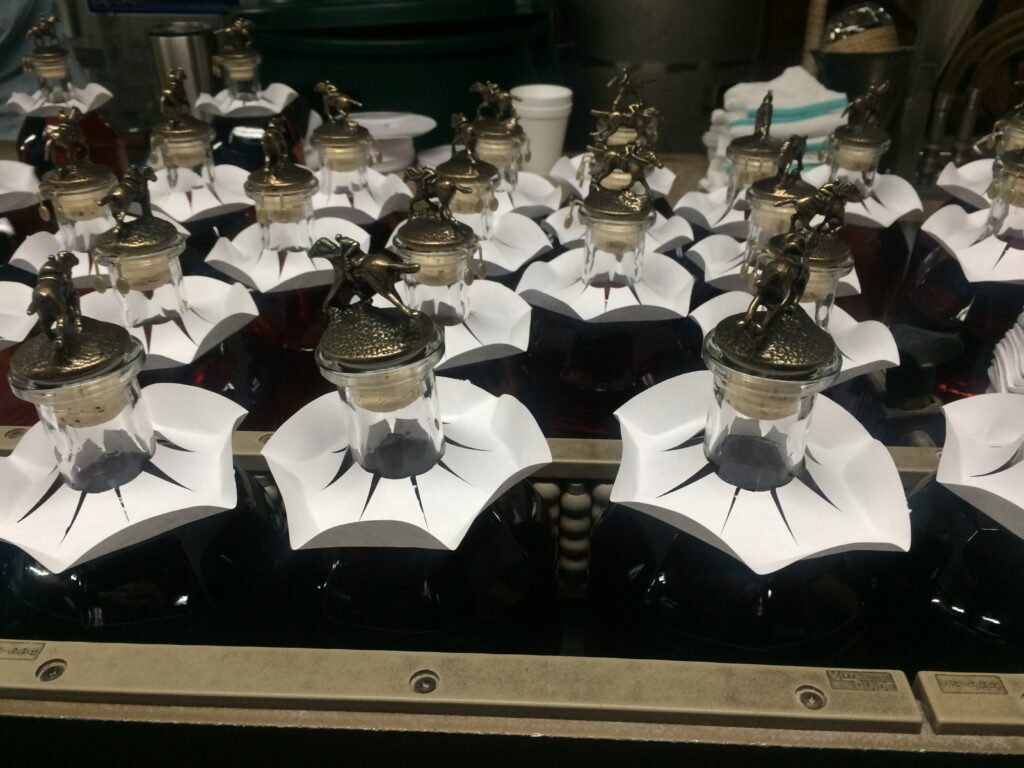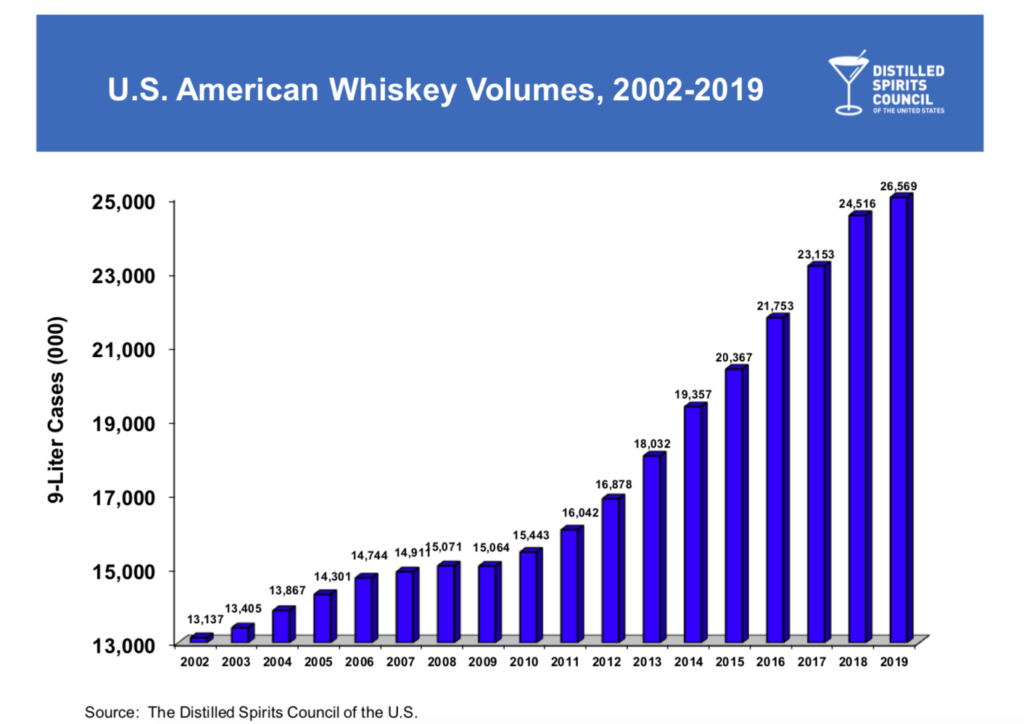Although the popularity of bourbon, America’s only native spirit, has risen and fallen throughout the past 100 years, it is experiencing in a resurgence today like never before in history.
Major distilleries have been expanding operations at a feverish pace to keep up with demand, and new craft distilleries are popping up all over the United States. Experts and industry insiders agree that this so-called “Bourbon Boom” is here to stay, and whiskey lovers around the world wouldn’t have it any other way.
History of Bourbon
But first, let’s take a quick look back to see just how far bourbon has come. While there’s no definitive date of when bourbon first began being distilled, historians agree that it started in the 18th century as Scotch and Irish immigrants settled in the New World and brought with them their distilling skills and equipment. Since corn was abundant in America, that was the main grain of choice when it came to distilling.
It took until 1964 for the U.S. Congress to officially declare bourbon a “distinctive product of the United States,” and it outlined a handful of specific rules one would have to follow in order to make whiskey a bourbon. Some of those are:
- It can only be made in America.
- The mash bill must contain at least 51% corn.
- The distillate must be put into a new, charred oak barrel (or cask).
- It is distilled no higher than 160°F.
- It is put into a barrel no higher than 120°F.
- It is bottled at no less than 80 proof.
But even prior to the 1960s, bourbon grew in popularity before Prohibition and saw an increase in distilleries — mostly located in Kentucky — producing hundreds of brands. Unfortunately, bourbon production was all but decimated during Prohibition (1920-1933), although a handful of distilleries were allowed to operate with government-sanctioned medicinal licenses.
Once Prohibition ended, it took a while for distilleries to return to the productions of their heyday, but by the 1940s and on into the 1970s, bourbon was king in America and began catching on throughout the world. In the late 1970s and early 1980s, bourbon began a slight decline as lighter spirits like vodka and gin and novelty products like wine coolers became all the rage with younger generations. Bourbon was out of favor for most of the ’80s and ’90s, causing many distilleries to shut down and several brands to disappear from shelves.
But it was during this slump when distillers began to think of new ways to sell bourbon. Like scotch whisky, with its premium single-barrel products, some companies decided to follow suit and create limited-edition, top-shelf offerings.

The first to do so was Blanton’s Single Barrel, which came out in the market in 1984 by Master Distiller Elmer T. Lee. In 1987, Jim Beam came out with Booker’s, the distillery’s first small-batch, unfiltered bourbon, and five years later launched the Small Batch Bourbon Collection that includes Knob Creek, Basil Hayden’s and Baker’s.
Slowly but surely, bourbon started to regain prominence in the 2000s, as trends swung back to classic cocktails, authentic, non-flavored spirits, and the fascinating history bourbon represents in America.
More Popular Than Ever Before
With hundreds of bourbon distilleries around the country and more than 70 in Kentucky alone, bourbon production is at an all-time high. According to the Distilled Spirits Council of the United States (DISCUS), during 2009-2014, the volume of cases of whiskey increased by 28.5% overall, with a total of 26 million cases sold in the U.S.

In fact, gross supplier revenues for U.S. bourbon and Tennessee whiskey (which the trade company combines in one category) increased by 46.7% during that same period, with the greatest growth coming from high-end products like the single barrels and small batches mentioned prior. High-end premium whiskey revenues were up 37% throughout the last five years, while super-premium brands were up 147%.
There are now about 10 million barrels of bourbon aging in Kentucky, making that two barrels for every resident, according to the Kentucky Distillers’ Association (KDA). Bourbon is an $8.6 billion signature industry in Kentucky, generating more than 20,000 jobs with an annual payroll of over $1 billion. Also, according to the KDA, there are more than $2.3 billion in capital projects either completed or now underway at Kentucky distilleries, a sign that the “Bourbon Boom” won’t be slowing down anytime soon.
In 2019, Kentucky exported more than $570 million in bourbon and other spirits, with the top export markets being Japan, Spain, Canada and Australia. (The U.K. once was a leading export region, but recent tariff changes have changed that.)
According to a recent article on VinePair titled “What’s Fueling the Billion-Dollar Bourbon Boom?,” writer Tim McKirdy cited some statistics that help put bourbon’s popularity in perspective. Two interesting excerpts from that article are below:
Nielsen data shows that off-premise dollar sales grew 12.9 percent in 2019, reaching a total $1.78 billion. Bourbon was the third fastest-growing spirit last year (fourth if you also count prepared cocktails), behind only tequila and rye whiskey. Meanwhile, only vodka and blended whiskey recorded greater off-premise dollar sales totals than bourbon in 2019.
Courtesy of VinePair
According to global data firm IWSR, bourbon represents 8.7 percent of the total spirits volume in the U.S. Looking back over the past five years, IWSR reports a compound annual growth rate of 7.9 percent for volume sales and 11.4 percent for dollar sales. IWSR predicts continued growth over the next five years, at a rate of at least 5 percent for both volume and value.
Courtesy of VinePair
McKirdy also referenced data from IWSR that shows younger people (25+) are drinking the most bourbon, and that even though white males make up 78% of bourbon drinkers in the United States, “consumption among non-white drinkers has increased across the board. Since 2013, the number of black or African-Americans who drink bourbon is up 22%, while the number of Asians who drink bourbon is up 36%.”
And finally, the article points out that bourbon consumption by wealthy drinkers is significantly up: “Consumption by adults with a household income between $150,000 and $250,000 has jumped 46% since 2013, according to MRI-Simmons. At the $250,000 to $500,000 range, it’s increased 78%.”
Invest Now
With bourbon sales continuing to increase during the pandemic and distilleries ramping up production to meet the worldwide demand, now is the ideal time to invest in bourbon.
While barrel investment is a new concept, it’s guaranteed that as your barrel ages, it will only increase in value year after year. The sweet spot for bourbon is between 6 and 9 years old, and, of course, the more premium brands include older distillate of 12, 15 and even 23 years old.
Bourbon is showing no signs of slowing down, so invest today and sit back as your young bourbon matures into a premium product. And when it’s ready to be enjoyed, you can have it bottled, sell or trade your barrel, or decide to continue aging it longer.
Contact CaskX today and dip your toes into rich history of Kentucky bourbon.


That’s a great article very informative.